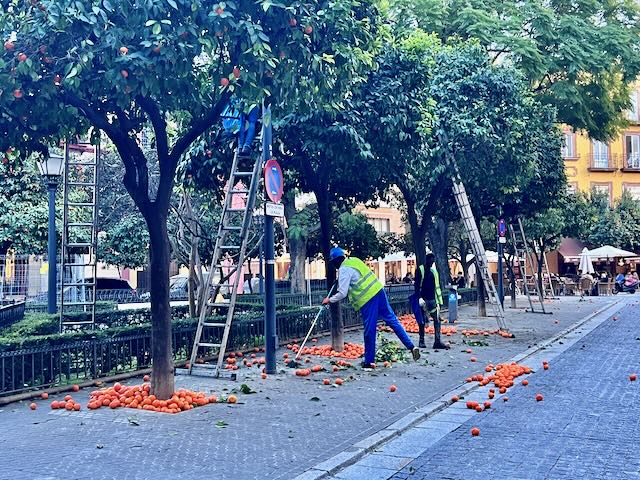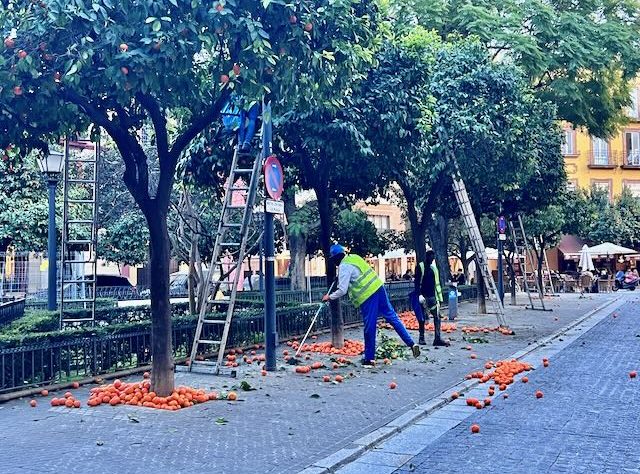It is that time of year when the fruit from the estimated 47,000 orange trees that line the streets of Sevilla’s 11 districts began to be collected.
The harvest begins usually after the oranges begin to drop on their own, often encouraged by winds and rains that come in January and February.
The trees bear bitter fruit that health officials here say are not generally fit for human consumption as they are found on the ground because their skins absorb so many toxins from the air pollution created by motor vehicles, industry and other sources.
The raw oranges probably would not suit the tastes of most people anyway, though some are cooked and used to make marmalade.
Thirty kilos of oranges collected from the famous gardens and patios of the Alcazar in Sevilla were sent in 2023 as a gift to King Charles of England for marmalade making, according a local newspaper report at the time. Across the city, As many as three million oranges might be collected in a span of two months or less.
Seville oranges, as they are called in English, are not of the sweet varieties found in food markets or used for orange juice. Instead, most of the harvest ends up as compost used to generate electricity. Some fruit also finds use as a food supplement for goats or other livestock. And some are crushed and the essential oil and other extracts are used to make cosmetics or teas.
Sevilla’s orange trees give off a lovely fragrance when blooming, which usually begins in late February or March, but also earlier as the mature fruit from the previous season drops.
There are colognes and perfumes made by a local company, Alvarez Gomez, that have the distinctive and refreshing orange scent. The company has long made products for men and women that remain quite popular locally and beyond.

